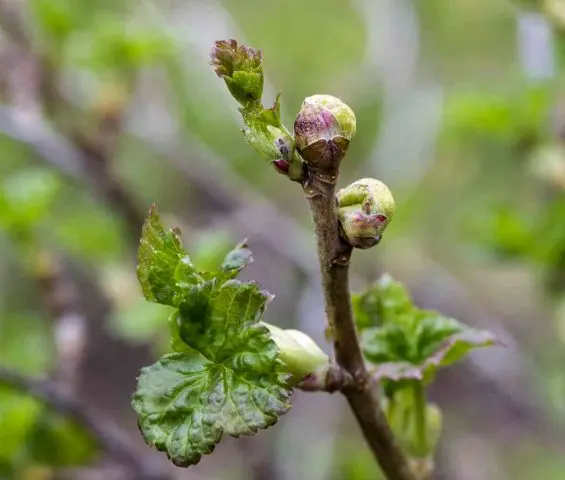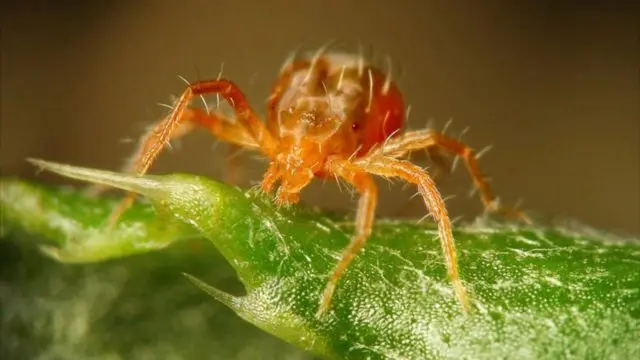Contents
Terry currant, or reversion, is a common disease that cannot be cured. Therefore, every gardener should be aware of the first signs of the disease, measures to prevent its development and the causes. With complete information, you can protect your site from the spread of terry and protect yourself from acquiring a diseased seedling.
What is currant terry
Terry currant is a serious illness caused by mycoplasma – an organism that cannot be called either a virus or a bacterium, since it occupies some intermediate space. The disease is transmitted along with the juice of the plant. Despite the fact that there can be no direct sap flow between a healthy and diseased bush, plants continue to become infected from diseased specimens. This is possible due to the activity of aphids and bud mites. Infection can also occur when taking planting material from a diseased bush.

What is dangerous currant terry
The main danger of the disease is that it is incurable. There are no drugs and folk methods that could effectively overcome terry. As a result, gardeners from year to year watch their currant bush and wait for the harvest, attributing the absence of berries to unfavorable growing conditions, improper care and spring frosts.
Terryness is also insidious in that it does not appear immediately. In appearance, a completely healthy blackcurrant bush may begin to bear fruit, but every year the berries become less and less, although the entire bush blooms. From the moment of infection to the appearance of clear signs of the disease, it can take from 2 to 4 years.
Causes of the disease
As mentioned above, the cause of the development of a disease called terry is a mycoplasma virus, the main carrier of which is a bud mite that infects a plant in spring and early summer. This is due to the fact that ticks that have successfully overwintered in diseased buds begin to colonize healthy buds and branches. The most dangerous period for a plant is the interval between the development of buds and the beginning of fruiting. At this time, the daily temperature does not fall below 10 degrees Celsius, which favors the spread of the pest vector. The migration period lasts a minimum of 2 weeks and a maximum of 2 months, ticks enter the crop with gusts of wind, are carried by insects and birds.

There are other carriers of the disease:
- spider mite;
- Bugs;
- aphid.
Signs of currant terry
Terry blackcurrant, the photo of which can be seen below, is an insidious disease, since it is quite difficult to identify it. For several years, terry may be present in the currant in a latent form, and its first signs appear most often only after 3 years.
Currant terry symptoms include:
- a large number of elongated shoots;
- the absence of berries, both on individual branches and on the entire bush;
- change in the shape and color of flowers;
- the absence of the usual aroma of currants;
- change in the appearance of sheet plates.

What to do with blackcurrant terry
Treatment of blackcurrant terry is impossible. The action of reversion cannot be stopped by any biological or chemical preparation, therefore the only way out of the fight against the disease is the immediate destruction of the bush. Unfortunately, it is necessary to act drastically. Pruning under the stump, removing diseased branches and leaves are not able to stop the progression of the disease.
Preventive measures
You can protect yourself and your crop only by taking preventive measures, which are to protect plants from terry carriers. The following preventive measures can be distinguished:
- Planting healthy seedlings. When choosing planting material, it is necessary to give preference only to proven points of sale and sellers.
- Compliance with quarantine. Since the disease does not manifest itself immediately, planted specimens should be under special supervision for the first 4 years. Only after this time it is possible to transplant the acquired bushes next to the old currant bushes and take planting material from them.
- Selection of varieties that are resistant to this disease.
- Inspection and destruction of currant bushes affected by terry. It is necessary to regularly conduct a thorough inspection of the currant, paying special attention to this during the completion of flowering. If even a single shoot with existing symptoms of infection is found, it is necessary to remove the bush completely. After that, blackcurrants cannot be planted on the site for another 5 years, since all this time the virus continues to live in the soil and is dangerous for the crop.
- Carrying out pruning. Many gardeners get too carried away with pruning blackcurrant bushes, as this allows for the growth of a large number of basal shoots. But it is they who are of particular interest to pests, which are carriers of terry.
- Compliance with sanitary measures during pruning. The secateurs, knife or other tool used to process currant bushes on the site must be disinfected. Having ennobled one bush, it is necessary to lower the inventory into boiling water or a solution of manganese, and only then proceed to the processing of the next bush.
- Examination of currant buds. Every spring, as soon as the buds begin to swell, you need to carefully examine them. Suspicion should be caused by swollen kidneys, as well as kidneys with an irregular shape. It was in them that ticks could get through. If such a problem is found, experienced gardeners recommend immediately removing the buds or the branches themselves (with a large number of affected specimens) and burning them. This must be done before the kidneys open. Only in this case can the spread of the disease be prevented.
- Treatment of shoots with boiling water. This method of dealing with terry has been proven over the years. Blackcurrant bushes are scalded with boiling water in late February – early March. At this time, the currant bushes are at rest, the buds do not swell yet. At least 7 liters of boiling water must be poured onto each bush. It is pointless to carry out processing in the autumn. Scalding is carried out in accordance with all the rules: the near-stem space is covered with polyethylene, sanitary pruning is carried out, the shoots are tied into one sheaf, pouring is carried out from a watering can with a small strainer with water at a temperature of 60 to 80 degrees.
- In addition to boiling water, you can arm yourself with a number of preparations for treating a currant bush from terry. The following means are suitable: lepidocide solution, colloidal sulfur, 1% bitoxidacillin solution. You can apply them several times. The first treatment is carried out in the period before flowering, when the buds are just beginning to form. The second – at the end of flowering, the third – after harvesting.
- In addition to the above funds, you can use such chemicals as Fufanon, Akarin, Fitovert. They are used when a large number of ticks are found on a bush.
- It is also possible to use folk remedies that are able to cope with ticks and other pest-carriers of terry. Among the most effective and popular means is an infusion of garlic, tobacco dust, onion peel. It is also necessary to process blackcurrant several times: before flowering, after it and at the end of the harvest.
- An important role is played by the increase in the immunity of currants. It is difficult to infect strong bushes of culture with terry, since they are not “popular” with pests, therefore weaker plants are preferred. To raise immunity, it is necessary to carefully care for the plant, apply fertilizers in a timely manner, mulch the soil, treat the shrub with immunostimulating drugs, a solution of molybdenum, manganese and boron.

Sustainable varieties
Experienced gardeners know that it is extremely difficult to defeat currant terry. Therefore, they increasingly prefer the choice of currant varieties that have some resistance to the development of this disease. This allows you to reduce the amount of effort applied to the cultivation of currants and its processing. Among the most resistant varieties are Zhelannaya, Memory Michurin, Success, Podmoskovnaya, Neapolitan.
Conclusion
Currant terry is a serious disease that can eradicate the entire culture on the site. It poses a particular danger in areas with a dry or too humid climate. Therefore, in such regions, gardeners will have to pay special attention to the cultivation of currants.









